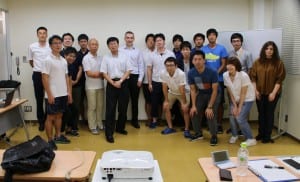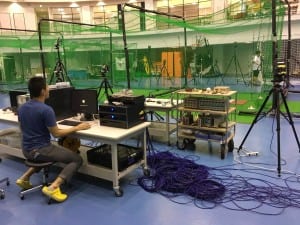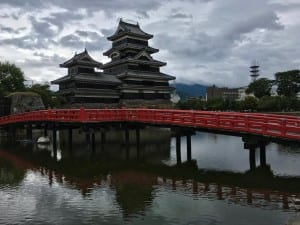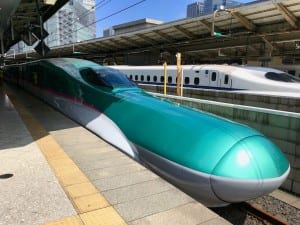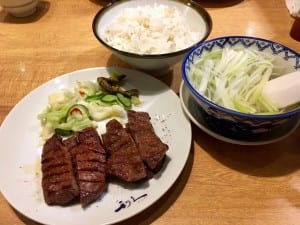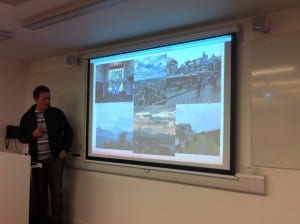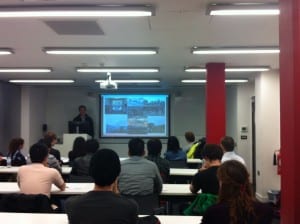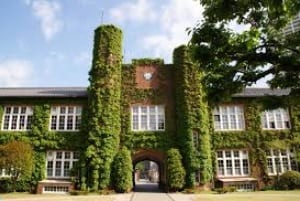In the early weeks of January 2017, in the middle of studying for my MA and my fourth year at Lincoln, I caught a rather nasty cold that left me bedridden for a couple of weeks. All I could do was to lie in bed and groggily make my way through my ‘to watch’ list of tv, movies and anime, and to think about the way in which my life was headed. As I lay there, trying to keep up with the subtitles and often having to pause just to catch up, I resolved that I was finally going to sit down and teach myself Japanese after years of passively listening to but never fully understanding it. About a week later I received an email from the university, advertising a series of extra-curricular language courses of which one was, fatefully, Japanese and my mind was made up. After a few months of attending the one hour a week course and enjoying every minute of it, I decided to look at taking it a little more seriously and continuing my study long after my time at university had ended. Perhaps even incorporating it into my PhD study in the future? I had heard of the JET programme beforehand and I was aware that native English speakers were sometimes recruited as teachers for overseas schools, but I had never thought of applying for those roles myself. As my MA steadily came to a close, however, I found myself thinking more and more about it and came to the conclusion that I would, at least, apply.

The application process itself was a little more paperwork than I had expected: three forms to fill in, a personal statement to write, a copy of my passport, proof of my degree and four copies of everything as well as two references. I found most of the work to be simple yes/no questions, but I had trouble writing my personal statement in which they asked me to explain why I chose JET and why I’d make the best candidate for the programme. I’m not a very open person so expressing my inner feelings and passion for Japan, Japanese and teaching didn’t come naturally. My advice for anyone applying is to recognise that at the very ground level, JET is a teaching job and whilst you might want to express your undying passion for anime or if you believe you are a reincarnation of Hokusai – and there’s nothing inherently wrong with that – you won’t stand out. If you can mix your desire for Japan alongside your desire for teaching and show that you can ground yourself in the reality of daily classes and (fun!) educational games, you’ll have a winning formula. Along with the bulk of administrative documents I was also asked where in Japan I’d like to be placed if my application was successful. I spent a few hours thinking about this as although I was somewhat familiar about the general geography of Japan, thanks to the toil of Sandy and our Japanese teachers at Lincoln, I didn’t know much about specifics. In the end I settled on three locations; firstly, I chose the city of Aomori (青森市) in Aomori prefecture (青森県) at the most northern tip of Honshū based entirely on the fact that it snows incredibly heavily there, and I like snow. Secondly, I chose the city of Kyōto (京都市) in Kyōto prefecture (京都府) mostly because of the sheer history of the city and the abundance of cultural sites there which appeal mostly to my love of anything old and prestigious. Finally, I chose the entire prefecture of Shizuoka (静岡県), mostly because of its location between Nagoya and Tokyo but also its proximity to Mt. Fuji. I’ll admit I didn’t think these choices through too thoroughly, but I knew that these were preferences and it’s not guaranteed that I would be placed in any of them. In addition, as fellow Japanese at Lincoln cohort Tom Harrison later pointed out, I could be placed on a small fishing island off the coast, so it didn’t really matter.
Interview
A big thing I noticed about JET is just how long the wait is between those short periods of interaction. I submitted my application, a giant pack of documents, at the start of November 2017 and heard back from them on January 8th, 2018. It was only two months, but it felt like more like six. I spent those last months of 2017 wondering if what I had submitted was correct or good enough to pass, and the longer I waited the more I convinced myself that I hadn’t gotten in and was simply waiting for rejection. When I received an email inviting me for an interview I was ecstatic; it was only a little hop down the garden path, but it felt like I had a chance now. My interview was to be held in London at the Japanese Embassy, which was incidentally my first time visiting the capital. The Embassy itself is in a proud Georgian building in the middle of Piccadilly, opposite Green Park and quite literally down the road from Buckingham Palace, quite the place for a job interview and just a little bit intimidating. Although the email specified some details about it, I spent a great deal of time researching others’ experience of their interview, things to remember or specific topics they might bring up. It seemed, however, that most candidates had different experiences, and that their questions were mostly drawn from their personal statements rather than a set sheet of standard queries. There were certain similarities however, some had questions on their Japanese, others on their teaching experiences, but mostly all stressed the importance of being Genki (元気) or friendly and engaged. By the time I had to leave I was sure I had the entire interview in my head and ran through every scenario possible, I was wrong on pretty much every part. For that reason, I won’t devolve much about my interview proper, it simply won’t do anyone, myself included, much good. The best way to prepare for it is in much the same way as any interview, by being confident, friendly, and knowledgeable about the job at hand. It’s worth noting that everything they know about you is drawn from your personal statement, so make sure you don’t forget anything, because it’ll almost certainly be brought up. In the end I left feeling confident that I had tried my best and hunkered down for what I knew was a few more moths of waiting.
Alternate
When you get the results of your interview there are three categories you might get placed in: acceptance, rejection and a mysterious third, alternate placement. Essentially, it’s a reserve list wherein if someone who is placed on the shortlist drops out then you get upgraded, but for all intents and purposes it’s not a guarantee. I was placed on the alternate list, and it hit me a little harder than it should have, and I took it as a full-blown rejection which it isn’t. Realistically there are only so many JET placements to go around so although I passed both the application and the interview process, I didn’t make the initial shortlist. I felt a bit rejected at first, waiting 5 months for a maybe wasn’t something I was expecting, but I kept my hopes up. Reading around, there are quite a few alternates each year. Nobody knows the sheer numbers, but I hazard a guess that there are a couple hundred, most of whom I think quietly accept it and move on with their lives; however I was determined that, eventually, I would be upgraded. After a week however, I did accept it and I started looking for graduate jobs and PhD positions elsewhere. This is the best thing an alternate can do, as it is not a rejection outright but a conditional acceptance, the condition being something you cannot control. I don’t know the exact reason I was placed as an alternate, they never tell you why, but I believe that it was due to my lack of experience or qualifications in teaching. It was the biggest weakness in my application and something that bugged me throughout the process, and the most important advice I can give is to bolster that, either with qualifications such as TEFL (Teaching English as a Foreign Language) or PGCE (Postgraduate Certification in Education), or simply with volunteer experience in schools or other learning environments. One of the necessities of being an alternate is filling out the same forms as a shortlist candidate, just in case you do get upgraded and the process is much smoother. In this instance it included a reply form, which was easy enough, a certificate of health and an international child protection certificate or ICPC. This is the only part of the application that actually required payment as a non-NHS appointment with the doctor on top of a chest x-ray from a private practice set me back around £150, and a further £60 to secure an ICPC. I wasn’t happy, mostly because I’m tight git, but that’s bureaucracy for you. Just over a fortnight after I was told about my status I received another email from UK JET, this time informing me on my promotion from alternate to the shortlist. Needless to say, I was a bit shocked, and the reality of being on the programme still hasn’t quite kicked in, but nevertheless I was and am very happy. I had no idea that they’d promote me, and I of course have no idea why, but that email confirmed that those months spent writing and waiting weren’t in vain. My waiting wasn’t finished however, as although I’d confirmed my place on the programmed I didn’t know where I’d end up.
Placement
In the middle of May I received a letter from the Embassy; inside was a pack of documents and information on the final preparations before departure, one of which finally told me where I was going. I’m headed to a small city called Nabari (名張市)in Mie prefecture (三重県) in the Kansai region (関西地方)of southern Honshū. When I first learnt where I was going I had to pull out an atlas as I didn’t have a clue where Nabari was nor what was there. It’s small, it only has a population of around 78,000 – Lincoln has a population of 97,000 for reference – and its Wikipedia page calls it a bedroom city wherein most of the population who live within commutes to workplaces in other cities. It’s flanked on three sides by larger cities, to the west lies Osaka (大坂市), the third largest city in Japan. To the north is Kyōto and the thirteen cities of Shiga prefecture (滋賀県); Japanese cities tend to blend into one another so its hard to tell them apart, check google maps to see what I mean. In the east sits Nagoya (名古屋市),the fourth largest city, and slap bang in the middle is the little sleeper of Nabari. Interestingly enough its nearest neighbour is Iga (伊賀市) supposed birthplace of the ninja, something that the tourist board of Nabari and Mie are quite proud of. All I know of my future home is what I can glean from its Wikipedia page, tourist site and the little contact I’ve had with both the board of Education at Nabari and my predecessor. From what I’ve learnt however, Nabari seems like an interesting place I’m incredibly lucky to have the chance to join that community.
This where I am today, I hope that after a few months in Japan and perhaps a few stories to tell I can come back and relate them here, but for now all I can do is wait. I have to thank everyone at the Japanese at the University of Lincoln group, without them I wouldn’t have even thought of applying for JET. Special thanks as well to Sandy and to all Japanese teachers at Lincoln whose work has and continues to inspire a range of students with a love of all things Japanese and does the university a great service. With that I say thank you and I look forward to the next chapter.
 |
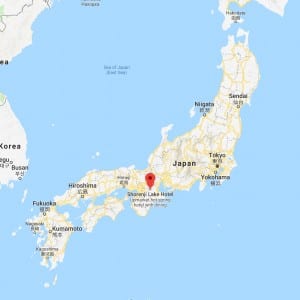 |
| Akame 48 Waterfalls, Nabari |
Nabari, Mie Prefecture |
![]() )
)




